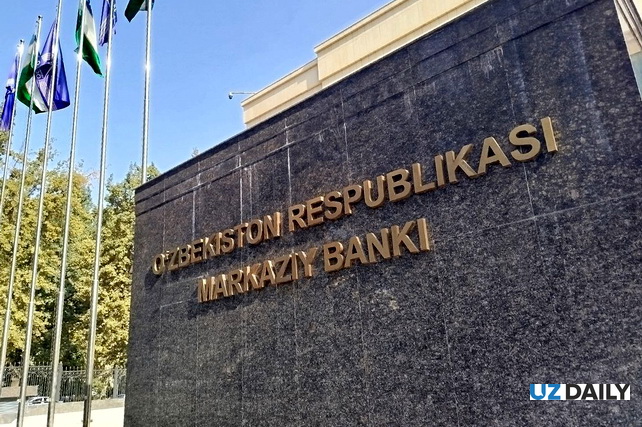
Uzbekistan Maintains Tight Monetary Policy to Curb Inflation
Uzbekistan Maintains Tight Monetary Policy to Curb Inflation
Tashkent, Uzbekistan (UzDaily.com) — The Central Bank of Uzbekistan has postponed the timeline for reaching its inflation target and intends to maintain a tight monetary policy to contain price growth amid robust economic expansion and ongoing structural reforms, Bloomberg reports.
Central Asia’s second-largest economy continues to open up under President Shavkat Mirziyoyev, who has launched wide-ranging reforms — from adopting a floating exchange rate to removing restrictions on capital repatriation. At the same time, the government is implementing an energy sector reform aimed at boosting competitiveness through tariff restructuring and subsidy revisions.
Despite the strong pace of growth, the Central Bank has been forced to keep its policy rate at 14%, following a 0.5 percentage point increase in March, to limit inflationary pressures.
Although price growth has slowed, the regulator now expects to reach its 5% inflation target only in 2027 and plans to “maintain tight policy throughout this period,” said Deputy Chairman of the Central Bank Abror Mirzo Olimov.
“We initially aimed to reach 5% by 2026,” Olimov said in an interview in Tashkent. “However, after the start of a new phase of energy tariff liberalization earlier this year, inflation picked up. We anticipated this and worked with the government to mitigate its effects.”
Over the past five years, Uzbekistan’s gross domestic product has doubled — surpassing US$100 billion — and the goal is to reach US$200 billion by 2030. In the first half of this year, the economy grew by more than 7%, strengthening the country’s position as one of the most dynamic markets in the region.
Nevertheless, according to Olimov, the Central Bank’s top priority remains combating inflation rather than directly stimulating growth.
ING Bank economists Dmitry Dolgin and James Wilson noted that the gradual slowdown in inflation could create “moderate room for policy easing.” The Central Bank’s own forecasts also suggest that “the rate-cutting cycle may not be far off.”
Olimov stated that the regulator is working to improve the efficiency of its monetary transmission channels, as real lending rates often exceed 20%. To reduce this gap, the Central Bank is enhancing liquidity management in the interbank market and improving transparency in its policy rate decisions.
Last year, the Central Bank introduced intraday liquidity operations, followed by repo transactions with its own bonds to absorb excess liquidity and expand banks’ capacity to manage funds. Since the beginning of this year, the regulator has also held regular meetings with journalists and bloggers to explain its policies and strengthen communication with the public and the business community.
As one of the world’s major gold producers, the Central Bank increased its international reserves to a record US$50 billion in September, driven by higher gold prices, which account for about 80% of its reserves. The gold is sold through the London Bullion Market Association (LBMA).
“We have benefited significantly from rising gold prices,” Olimov said. “Gold acts as a buffer — when the global economy slows, its price tends to rise. This supports Uzbekistan, as higher gold prices boost our international reserves and tax revenues from gold-mining enterprises, strengthening the state budget.”
Nevertheless, the Central Bank aims to increase the share of liquid assets in its reserves. It currently holds around US$1 billion in U.S. Treasury securities and short-term bills, and has placed an additional US$800 million through the World Bank’s Reserve Advisory & Management Partnership (RAMP) program.
According to Olimov, work is underway to secure authorization to invest in bonds issued by international financial institutions and corporate debt instruments. This will become possible after the full automation of the reserve management system, an IT project supported by the World Bank and expected to be completed between 2026 and 2027.
“Once the new system is in place, we will be able to invest in a wider range of instruments than we can today,” Olimov noted. “We expect to complete the project by 2026, although it is a complex undertaking.”